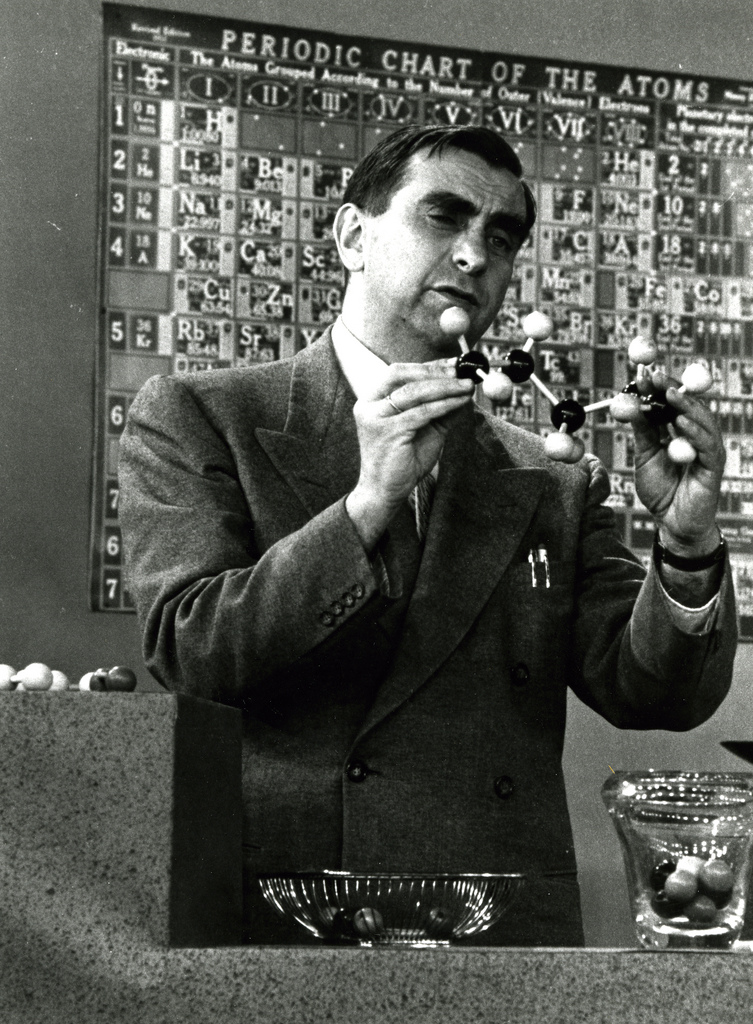Edward Teller, who together with E. O. Lawrence was one of the driving forces behind the founding of the Lab, served as its second director. The Lab was well along in the development effort for the Navy’s Polaris missile warhead, the Lab’s first military design project and a major success in miniaturizing nuclear devices. The Polaris design was confirmed in an Operation Hardtack shot in 1958, only a few months before testing was halted by the international nuclear-test moratorium.
The test moratorium was perhaps Teller’s greatest challenge as director, as he was faced with keeping the Lab viable and the people working on nuclear designs, even though they couldn’t conduct any tests. During this time, plans were laid for a program exploring the peaceful uses of nuclear explosives—Project Plowshare.
In 1960, Teller resigned as director to become professor of physics at large for the University of California. He later served as chairman for the UC Davis Department of Applied Sciences at Livermore, as a Laboratory associate director, and as director emeritus. He also served as senior research fellow at the Hoover Institution of Stanford University.
Teller was best known to the public for his work on the development of nuclear explosives and for his advocacy of a strong defense for America. He was a noted physicist with more than 100 technical publications, several books, some patents, and numerous articles in the popular media.
Born in Budapest, Hungary on January 8, 1908, Teller received his Ph.D. in physics under Werner Heisenberg in 1930, and continued to work under him for another year. From 1931–32, he worked at the University of Göttingen, associated with James Franck. With the rise of the Nazis he left Germany, and from 1933–34 he worked in Copenhagen with Niels Bohr on a Rockefeller Fellowship. At this time, he was married.
After a short period in London, he was appointed Professor of Physics at the George Washington University in Washington, D.C., where he continued to work until 1941.
Prior to 1939, and the announcement to the scientific community of the discovery of fission, Teller was engaged as a theoretical physicist working in the fields of quantum physics, molecular physics, and nuclear physics. In 1941, his interest turned to the use of nuclear energy, both fission and fusion. He began work on the Manhattan Project at Columbia University and the University of Chicago with Enrico Fermi and Leo Szilard. In 1943, he joined Los Alamos and continued his work on both fission explosions and early plans on thermonuclear explosives. In 1946, he returned to the University of Chicago for two years as professor, again as a close associate of Enrico Fermi and Maria Mayer.
From 1949–50 he was again at Los Alamos, concentrating on the hydrogen bomb and contributing to the decision to make the thermonuclear reactions a major part of the US defense program.
In 1952, at the time of the first test of the hydrogen bomb, Teller joined the University of California at Berkeley and started work at the newly founded Lawrence Livermore Laboratory. In 1953, he was named as professor of physics at the University as well as associate director, and from 1958 to 1960, director of the Laboratory.
Among his many honors, Teller was awarded the Presidential Medal of Freedom in 2003 by George Bush, just a few months before his death in September of that year. He was presented with the National Medal of Science for 1982 by President Ronald Reagan, as well as the Presidential Citizens Medal in 1989. He was also a fellow of the American Academy of Arts and Sciences, the American Association for the Advancement of Science, and the American Nuclear Society.





